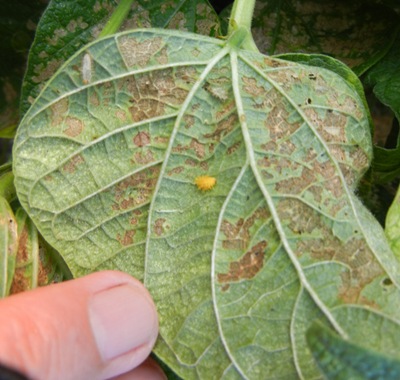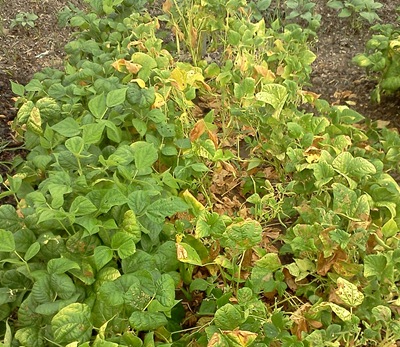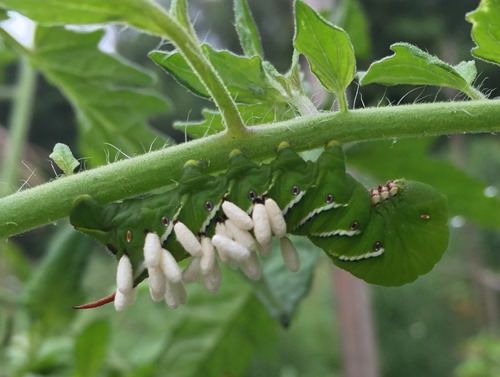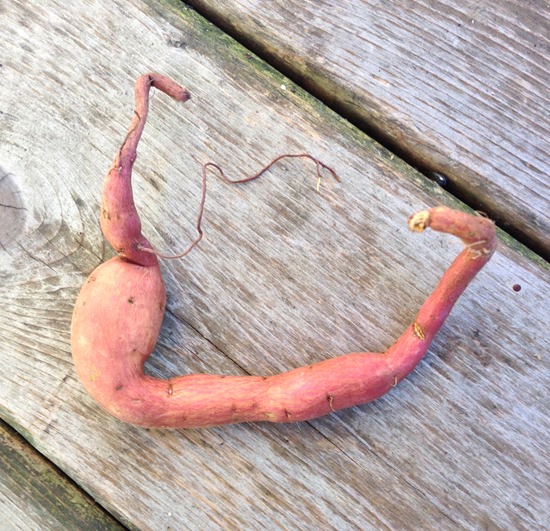About five weeks ago I started seeing something on my bush beans. I was expecting them and knew what to look for.

Those pretty yellow bumps are the eggs of a Mexican bean beetle. The adults, which I don’t have any of my own pictures of, resemble ladybugs. They are related, but the bean beetle has more of an orangey color and small spots in horizontal bands.
When the eggs hatch you can find the larvae feeding on the underside of leaves. They’re yellowish as well and are covered with spines.

The adults and larvae feeding on the leaves of the bean plants can obviously do a lot of damage. What I find interesting is that they appear to like some varieties of beans more than others. In this picture there are three rows of beans. From left to right they are Black Valentine, Jacob’s Cattle Gasless and Lina Cisco’s Birdsegg.

Notice anything? It looks like the beetles don’t especially care for the Black Valentine compared to the other two. They’re also more or less leaving my white kidney and pole lima beans alone.
So how does one control them in an organic garden? At first I was doing the simplest approach—removing and destroying the eggs and adults whenever I found them. But given the number of bean plants I have and the fact that I can’t get to the garden every day that approach wasn’t going to do much.
Here’s one of the advantages of having a plot in a community garden. I and several other gardeners on the committee were charged with monitoring our bean plants and reported when the first eggs were spotted. Whoever was in charge of such things then ordered some predatory wasps that, being really, really pricey are out of the range of most home kitchen gardeners. The timing of the wasps’ release is very important so they are shipped overnight just before they emerge.

A little mesh bag is hung inside the bean plants (I moved this one out for a picture) so the wasps don’t have to go far. They’re very tiny and I haven’t seen any. The wasps lay their eggs in the bean beetle larvae where they hatch, feed on the beetle thus killing it, pupate and then emerge to start the cycle all over again on more larvae. These little buggers are gruesomely effective. This is the third year I’ve been growing beans here and the first time the beetles have been noticeable. The wasps have been used in the past and other gardeners report that they worked very well in knocking back the beetles for several years. My plants are forming beans that should mature and be harvestable. With some luck next year’s crop won’t have to suffer this kind of infestation.
Using the wasps to treat for the beetles is an example of a biological control. Do you employ biological controls in your garden?







